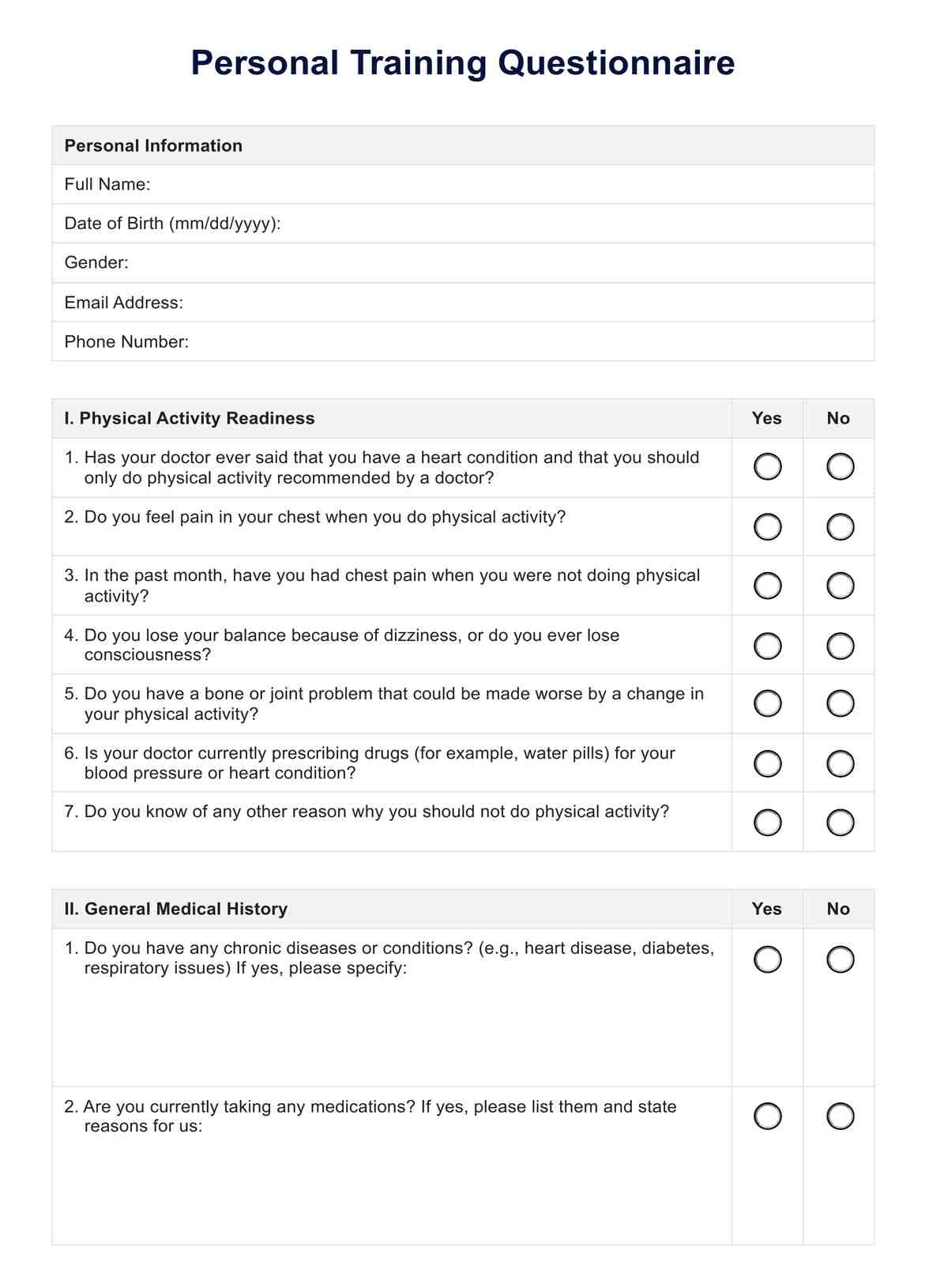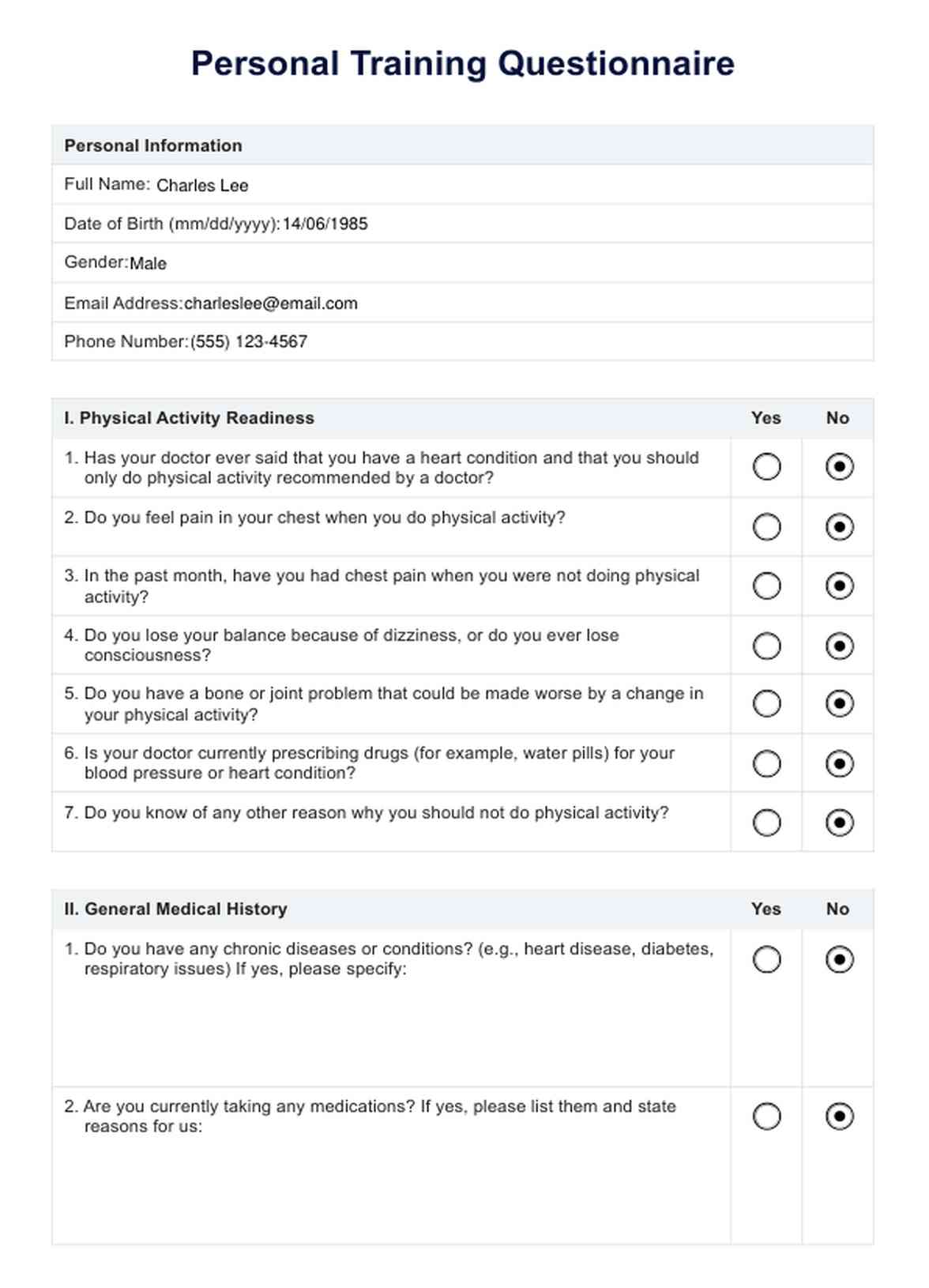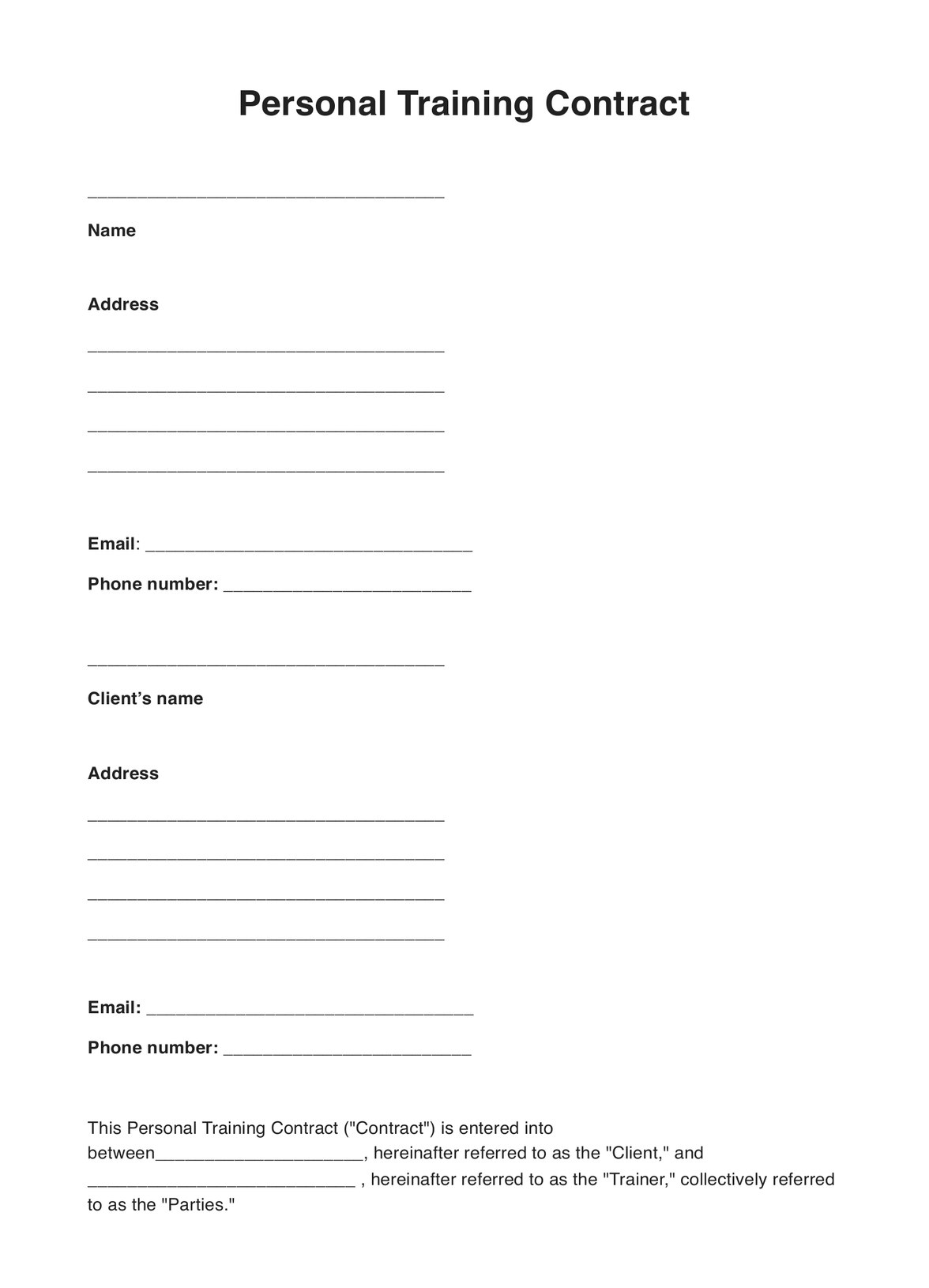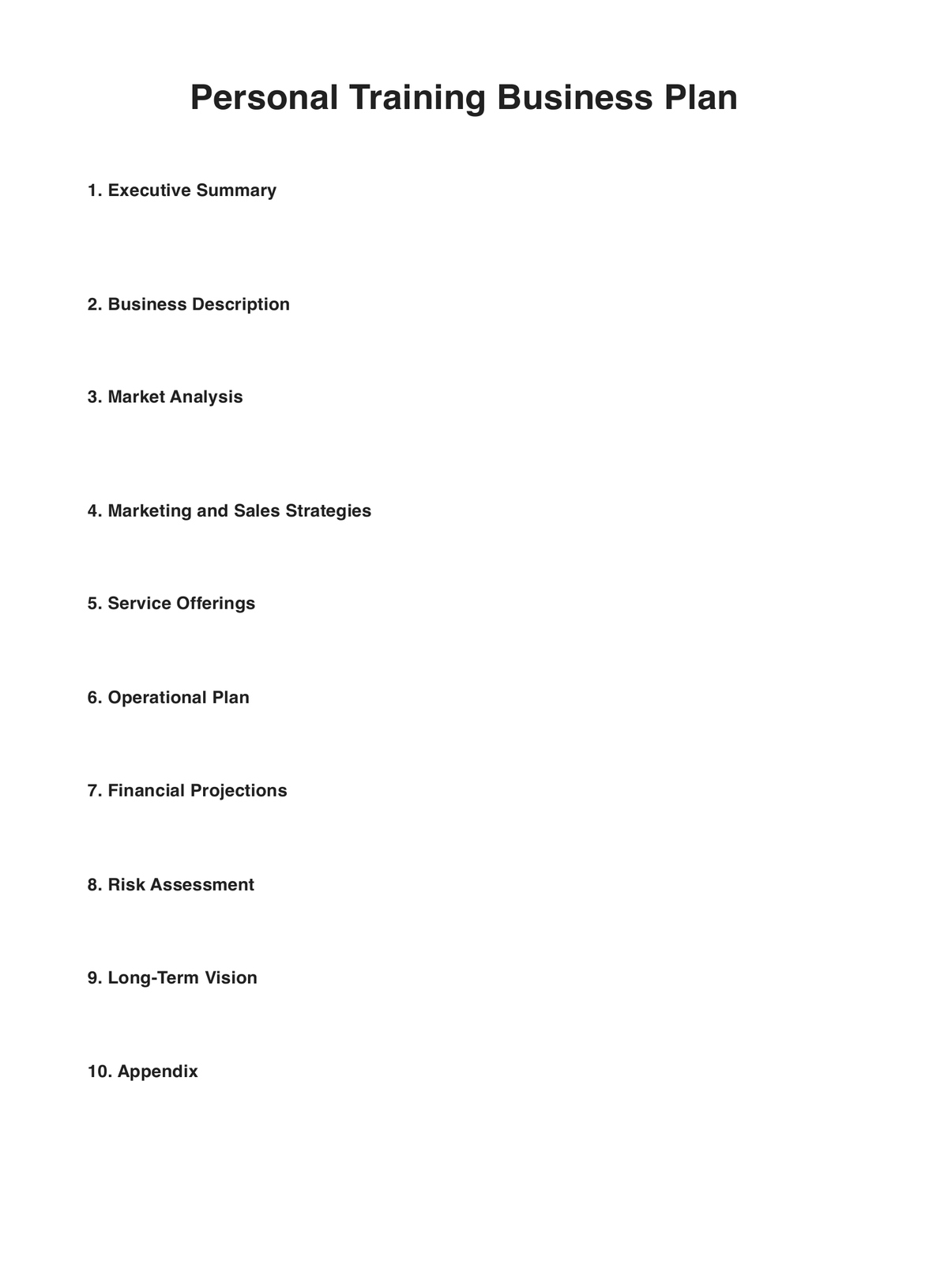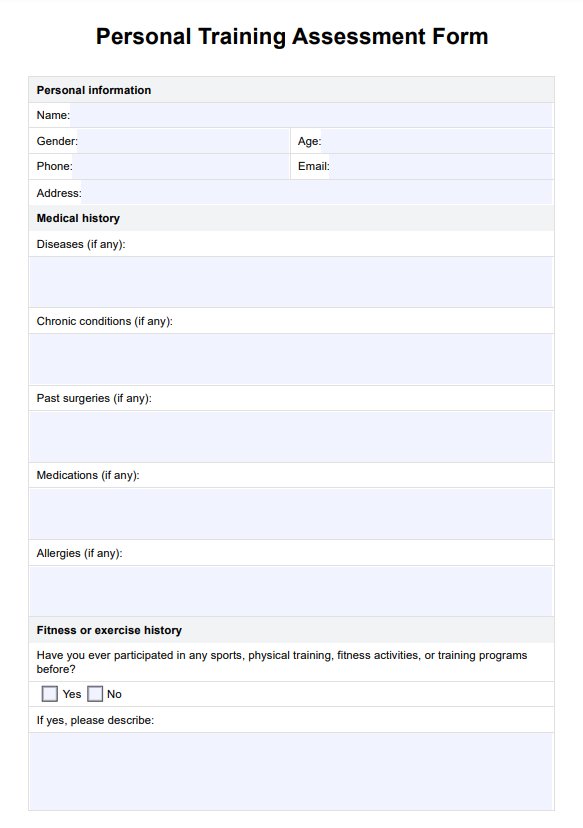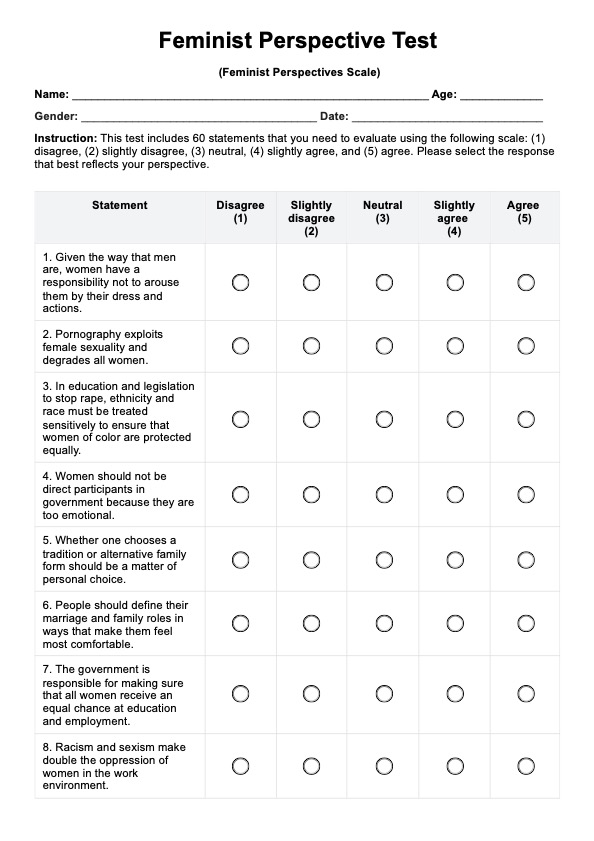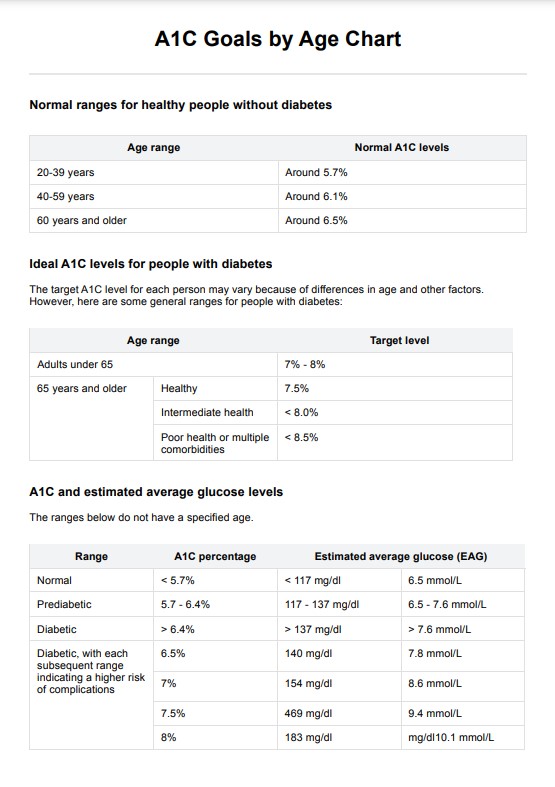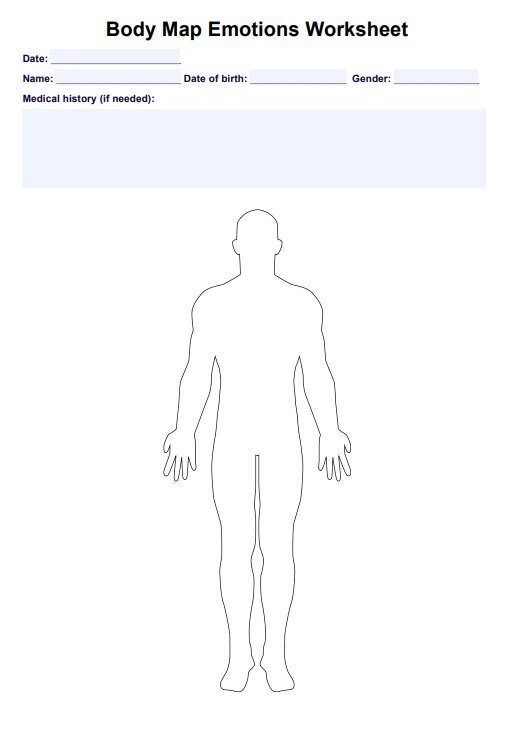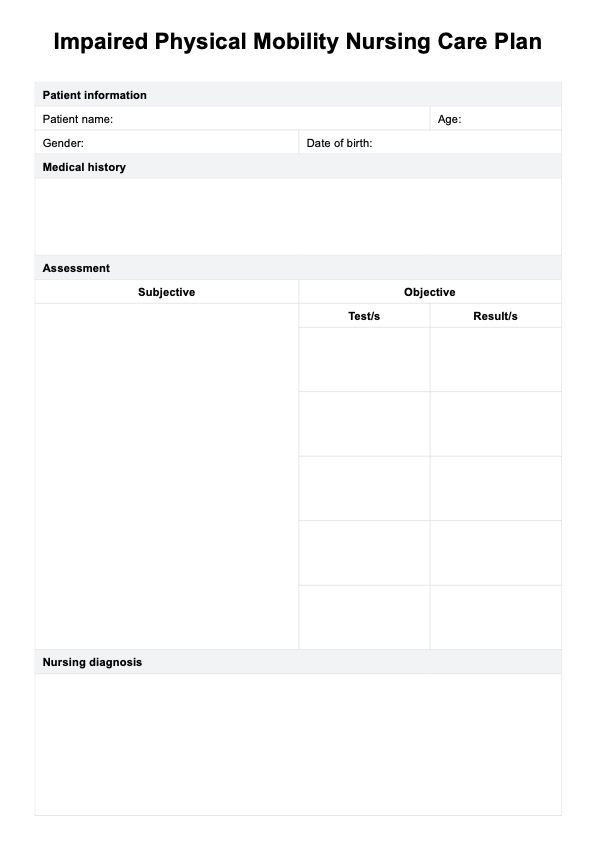Personal Training Questionnaire
Access a comprehensive Personal Training Questionnaire to integrate when onboarding new clients to ensure a personalized fitness plan.


What is a Personal Training Questionnaire?
Understanding your client's unique needs and goals is the first step towards a successful personal training journey. A well-designed Personal Training Questionnaire is valuable for gathering this vital information. This is primarily used in the initial consultation for a fitness or personal training program and aims to gather essential information about an individual's health background, fitness level, lifestyle habits, and personal goals.
This instrument is not just a formality or asking a few questions. It represents a critical step in designing a tailored, effective, and safe workout regimen, especially for new personal training clients, considering their unique needs and comfort levels.
Understanding a client's health history and limitations allows trainers to design workouts that minimize the risk of injury and promote overall well-being. A well-structured questionnaire streamlines the personal training assessment process, enabling trainers to gather essential data efficiently and focus on developing effective training strategies. It can also be used alongside other tools to collect client data, such as training intake and consultation forms.
Key components
A well-structured personal training questionnaire typically includes several essential categories:
- Personal information: This section typically includes details such as name, age, contact information, occupation, and emergency contacts. Understanding these basic demographics helps trainers establish a rapport with their clients and ensures effective communication.
- Health history: Gathering information about past and current medical conditions, injuries, surgeries, medications, allergies, and any existing health concerns is crucial for designing a safe and appropriate exercise program. This data enables trainers to modify exercises to prevent injury and accommodate health limitations.
- Fitness goals: Understanding the client's fitness objectives, whether weight loss, muscle gain, improved endurance, or overall health and wellness, is essential for creating a customized workout plan. Setting clear and achievable goals helps the trainer and the client track progress and stay motivated.
- Exercise preferences: Inquiring about the client's current level and exercise preferences, such as favorite activities, preferred workout times, and any specific dislikes, allows trainers to design a program that is enjoyable and sustainable.
- Lifestyle factors: Stress levels, sleep patterns, nutrition habits, and daily activity play significant roles in overall health and fitness. Assessing these lifestyle factors helps trainers provide holistic guidance and support to help clients achieve their goals.
Personal Training Questionnaire Template
Personal Training Questionnaire Example
What is the importance of a Personal Training Questionnaire?
A personal training questionnaire is vital in the fitness industry as a critical information assessment and collection tool. This instrument can effectively clearly understand a client's health status, fitness level, lifestyle habits, and, most critically, their goals. Here are some reasons why a personal training questionnaire is crucial:
Personalized plan development
The personal training questionnaire better explains a client's health and distinct fitness aims. Understanding a client's objectives—whether weight reduction, cardiovascular endurance improvement, or others—helps trainers generate an individually tailored training regimen, hence promoting effectiveness and engagement
Ensuring safety
Individuals differ significantly in their health conditions and fitness levels, reminding us of the danger posed by one-size-fits-all training programs. The questionnaire can highlight conditions such as heart disease, asthma, past surgeries, or if they are undergoing physical therapy. This can then inform the preparation of workouts that are not only effective but also safe.
Facilitate goal tracking
The questionnaire records the client's initial conditioning. Over time, trainers can refer back to this baseline for progress assessment, goal realignment, and motivation reinforcement. This goal tracking and progress observation is critical in elevating client satisfaction.
Improves communication
Beyond the assessment, the questionnaire promotes dialogue between the lifestyle coach and the client. This allows trainers to gather feedback, creating rapport and trust, thereby improving the success rate of the personalized plans.
How to create an effective questionnaire
An effective personal training questionnaire is essential for gathering pertinent information to guide the development of personalized fitness programs. Here are some key areas to include to help you create a comprehensive and efficient questionnaire:
Start with the basics
Begin by collecting basic demographic information such as age, gender, contact details, and emergency contact information. This fundamental data helps understand the client's background and emergency situations.
Health and medical history
A comprehensive section on health and medical history is crucial. Include questions about past and present medical conditions, surgeries, medications, and family health history. Inquiring about any physical limitations that might affect the training program is essential. This ensures the planned regimen is safe and accommodates the client's needs.
Fitness history and goals
Understanding where a new client stands in their fitness journey is critical. Ask about current and past fitness activities, previous experiences with personal trainers, and what they liked or disliked about those experiences. Importantly, delve into the client's fitness goals. These could range from weight loss to building strength, improving flexibility, or preparing for a specific event.
The specificity of their goals aids in tailoring a precise and motivating plan.
Lifestyle and daily routine
Gaining insights into the client's daily routine helps create a realistic and sustainable program. Include questions about their job (sedentary vs. active work), stress levels, dietary habits, sleep quality, and other obligations that might impact their fitness journey.
Preferences and motivations
Understanding what motivates your client and their exercise preferences can significantly influence the program's success. Enquire about preferred types of exercises, favorite gym equipment, and how they like to be motivated or pushed during a workout.
Open-ended questions
Incorporating open-ended questions can provide valuable insights. These allow clients to express any concerns, special requests, or additional information they think might be relevant. It also opens up dialogue, building a foundation for solid communication.
Consent and acknowledgment
Finally, sections should be included where new clients can acknowledge they have provided accurate information to the best of their knowledge and consent to participate in the training program under the outlined terms.
Tips to administer the Personal Training Questionnaire
The Personal Training Questionnaire is your gateway to crafting a successful training program for each client. Here are some key strategies to ensure you gather the most valuable information and set your clients up for results:
- Establish trust and transparency: Start by setting a positive and collaborative tone. Briefly explain the questionnaire's purpose – to design a personalized program that aligns perfectly with their goals. Emphasize how their honest responses will maximize their training experience.
- Speak clearly and communicate effectively: Ditch the technical jargon! Use straightforward and concise language that every client can understand, regardless of their fitness background. This ensures accurate responses and avoids confusion.
- Context is king: Don't leave clients wondering why you ask specific questions. Provide brief explanations for the information you're seeking. Understanding the "why" behind a question can motivate clients to invest more thought and detail in their responses. For example, explaining that understanding their past injuries helps design a safe and effective program fosters trust and a collaborative environment.
- Foster open dialogue: Schedule a follow-up meeting to review the completed questionnaire together whenever possible. This clarifies points and demonstrates your commitment to tailoring the program to their needs. Use this opportunity to address any concerns they may have and answer questions that arise from their responses.
Implementing these tips will transform the Personal Training Questionnaire from a simple data collection tool into a powerful conversation starter. This sets the stage for building strong client relationships, crafting personalized programs, and ultimately, achieving their fitness goals together.
Next steps after the completed questionnaire form
A detailed and customized fitness journey begins once a client completes a personal training questionnaire form. Moving forward, you can take the following steps to use the information collected more effectively:
1. Conduct an initial consultation
Arrange a meeting virtually or in-person to discuss the questionnaire responses in more detail. This is an opportunity to clarify any answers, address concerns, and get to know your client better. Establishing a rapport and ensuring the client feels comfortable and valued is essential.
2. Develop a personalized fitness program
Design a personalized fitness program using the insights gained from the questionnaire and discussions with clients. This should consider the client's fitness level, health conditions, available time, and preferred activities. The program should be designed to challenge the client while keeping them engaged and motivated progressively.
3. Plan regular assessments and adjustments
Once the training begins, schedule regular check-ins to assess progress toward the set goals. These assessments can help determine whether the program needs any adjustments. Flexibility is critical, as the client's needs or circumstances may change.
Reference
Quinn, E. (2008, November 12). PAR-Q (physical activity readiness questionnaire) for safe exercise. Verywell Fit. https://www. .com/physical-activity-readiness-questionnaire-3120277
Commonly asked questions
The questionnaire responses should be analyzed to create a personalized fitness plan tailored to the client's fitness level, medical history, and goals. Additionally, these responses can guide an initial consultation, set SMART (Specific, Measurable, Achievable, Relevant, and Time-bound) goals, and provide a benchmark for measuring progress over time.
Revisiting the questionnaire form with your client every 3 to 6 months is recommended. However, this frequency can vary based on individual client progress, changes in their health status, or modifications in their fitness goals.
Client data can be effectively kept safe by using secure systems that comply with privacy laws, implementing strong passwords, providing employee training on data security, conducting regular system updates, and doing regular backups. If you're using software like Carepatron, peace of mind comes from built-in data security features that adhere to rigorous standards, such as the Health Insurance Portability and Accountability Act (HIPAA).


